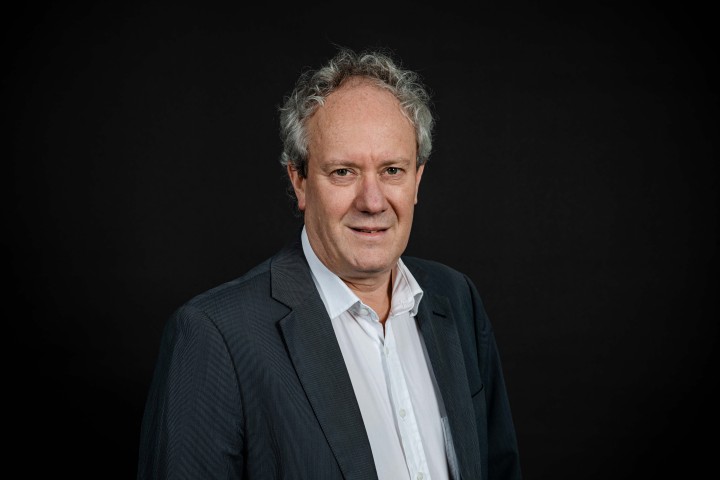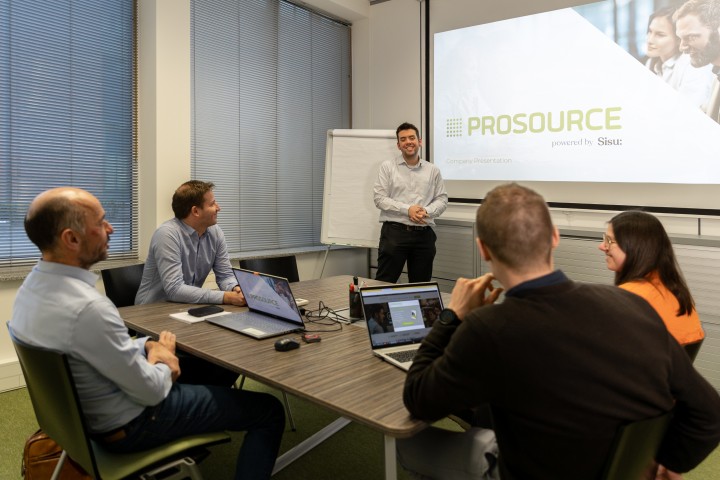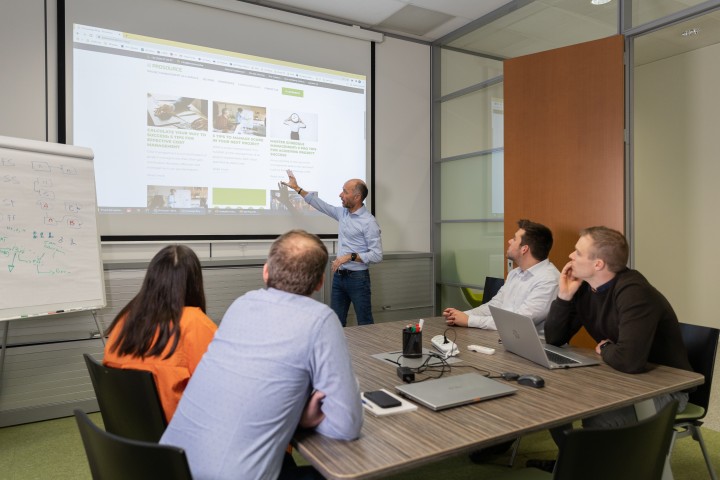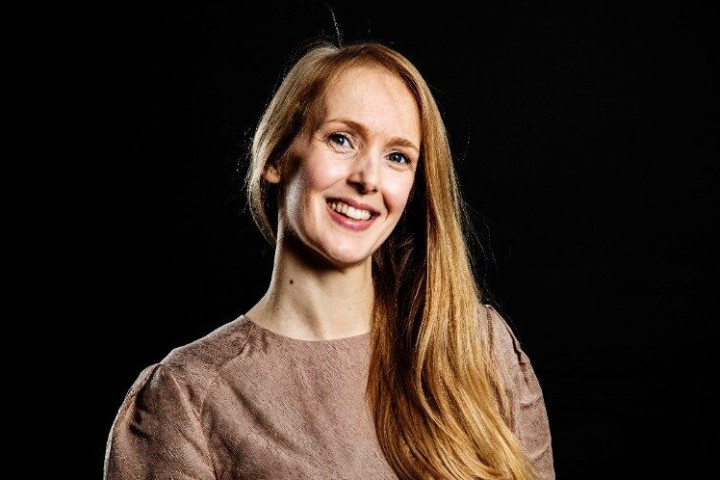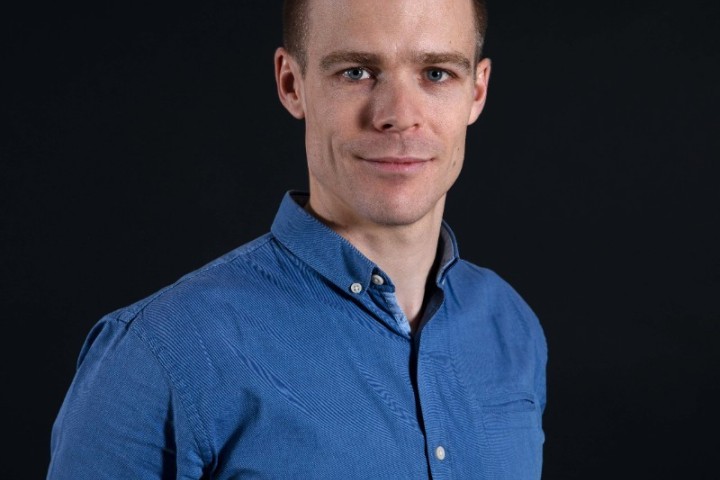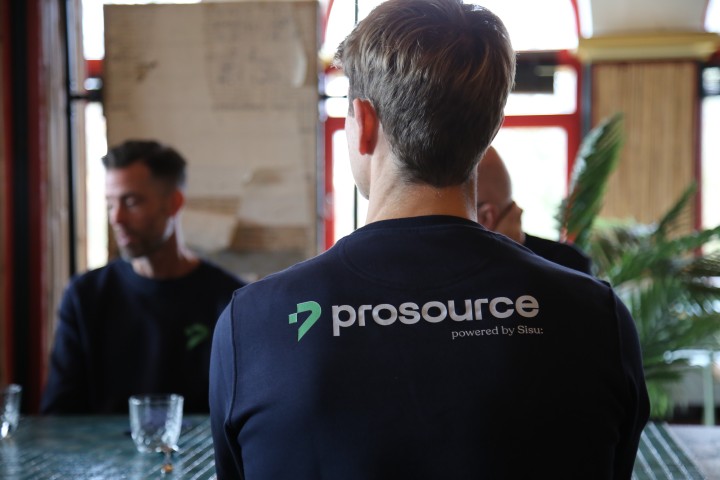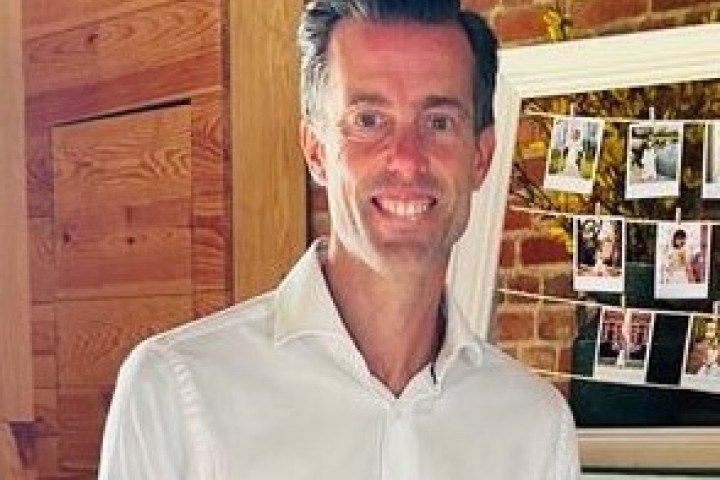An In-Depth Look At the Scrum Framework
-
Testimonial
-
Project Management
Share
Scrum is a framework that facilitates the adoption of an Agile way of working. Working in an Agile way permits working in close collaboration with the business, improved quality and productivity, business and team agility, etc.
WHAT IS SCRUM?
Summarised into one sentence, Scrum is a framework that facilitates the adoption of an Agile way of working. As explained in our recent blog in which we highlight its advantages, working in an Agile way permits working in close collaboration with the business, improved quality and productivity, business and team agility, etc.
The framework was first developed in the early 1990s. Nevertheless, it wasn’t until 2010 that Ken Schwaber and Jeff Sutherland published the first-ever Scrum Guide. The latest version is available on scrum.org. Schwaber and Sutherland, along with 17 other authors, also created the Agile Manifesto in 2001.
In short, Scrum is:
- a lightweight framework that supports people, teams, and organisations in generating value through adaptive solutions for complex problems
- founded on empiricism and lean thinking
- based on three important pillars: transparency, inspection and adaption
Successful use of the framework is dependent on people becoming more proficient in relation to the following values:
There are three Scrum artefacts: the Product Backlog, the Sprint Backlog, and the Increment.
The graphic below visualises the Scrum Team, events and artefacts, which we will explain in greater detail later on.
SCRUM EVENTS
Scrum is divided into five events: the Sprint, Sprint Planning, the Daily Scrum, the Sprint Review, and the Sprint Retrospective. When working in a bi-weekly Sprint, the following timeline could be an example of the scheduling of the different events, where we consider the start of the Sprint the first Monday of the bi-weekly sprint.
In the table above, a number of timeslots are dedicated to backlog refinement. In fact, this is not an official Scrum event. However, in order to be prepared for the upcoming Sprints, it is necessary that the Product Backlog Items (and especially the stories at the top of the Product Backlog) are broken down into smaller, more precise items, to a level where they can be taken up as a Sprint Backlog item during the next Sprint planning. This allows the Developers to commit to the realisation of this story in the upcoming Sprint.
FUNDAMENTAL UNITS
Its fundamental unit consists of a small team, simply referred to as the Scrum Team. This team is made up of one Scrum Master, one Product Owner, and Developers. Moreover, these units are often characterised by a few qualities including:
-
cross-functionality: they all have the skills to create value in each Sprint
-
being small enough to remain flexible, yet large enough to complete valuable work
-
structure and empowerment by the organisation to manage their own work
-
being responsible for creating useful increments every Sprint
TEAM MEMBER ROLES
Let’s have a look at some more details of the role of the Product Owner:
-
The Product Owner is accountable for maximising the product’s added value. Hence, the PO must be outward-oriented towards the product stakeholders
-
The Product Owner represents “the business”
-
As the product is customers-centric, the Product Owner should also have expert knowledge about said product.
The term “product” is an important element. Typically, a product vision is created. It is important to have a broad as possible definition of the Product,’ with a focus on the customer/end-user.
Another member of the unit is the Scrum Master:
-
The Scrum Master is responsible for establishing the framework by enabling everyone to understand its theories and practices. Therefore, this person is accountable for the Scrum team’s effectiveness.
Scrum Masters also provide support to the:
- Scrum Team, by providing coaching in self-organisation, cross-functionality, focusing on valuable increments, removal of impediments, etc.
- Product Owner, by providing coaching in product definition & planning, Product Backlog management, etc.
- Organisation, with training and coaching in its Scrum adoption
Finally, the teams are also comprised of Developers. The term “Developers” covers a broader base than pure software developers (in the case of software development). It is a collection of all roles that can contribute to the delivery of Increments.
Thus, this role might include analysts, software engineers, testers, architects, and more.
In a Scrum team, Developers are committed to creating a usable Increment each Sprint.







